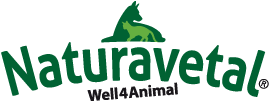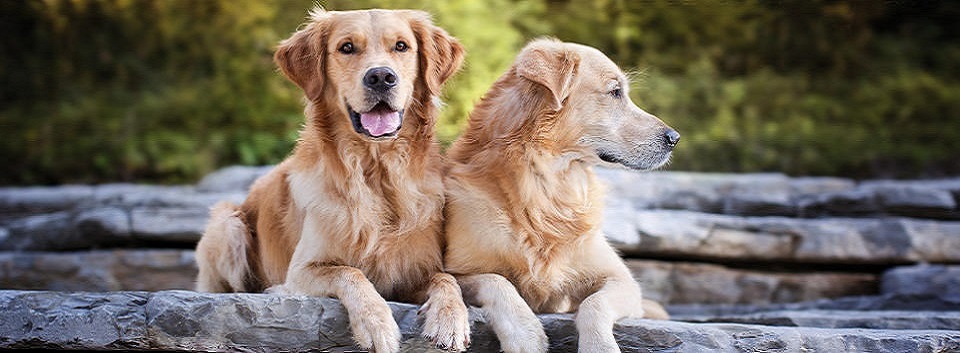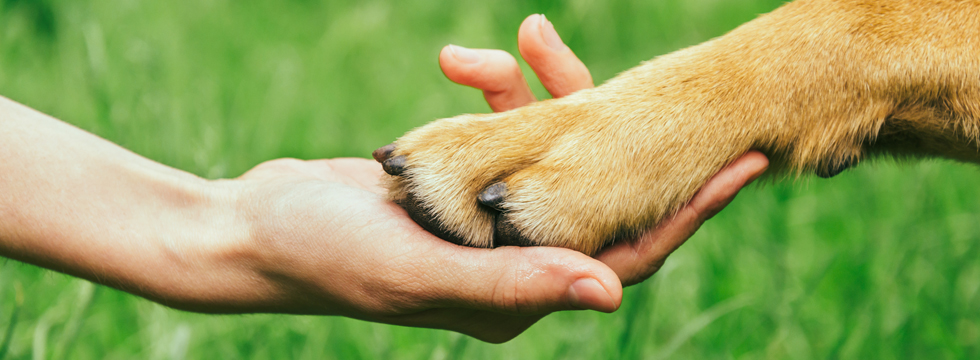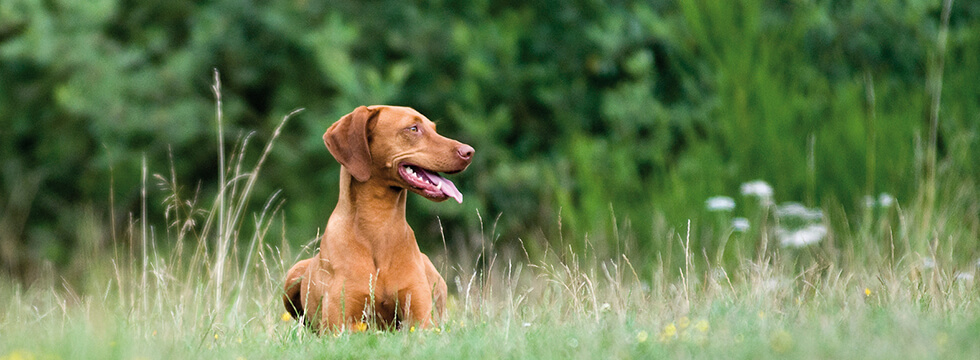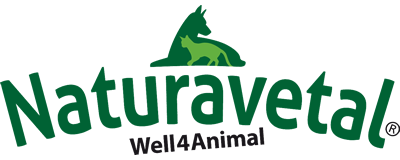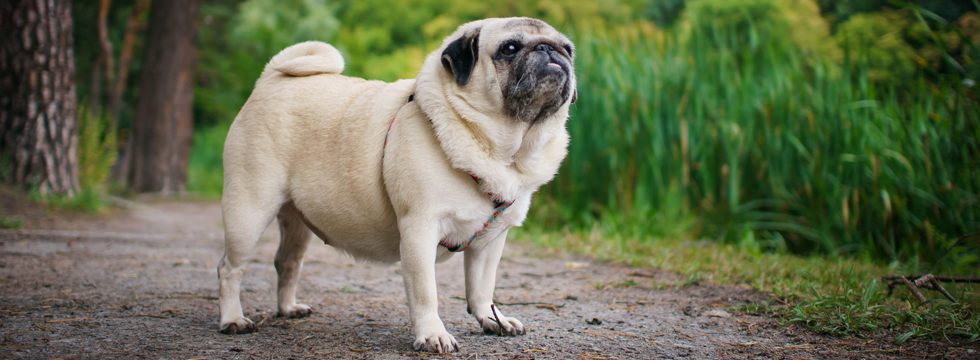
Food for overweight dogs: When is a dog too fat?
This applies to animals as well as people: one cannot go past delicious food and not be tempted to eat it. Firstly masters and mistresses should pay attention to their BMI or look in the mirror to see if food should be curbed at meal times and above all snacking in between. This is more difficult for the dog. He receives the food from his owner. Not every dog knows when they have had enough and some breeds eat with more passion than others. It is well-known that treats, can favor the overweight.
The Vet can tell if an animal is too fat. Howevver there is also a simple test that you can do at home. Simply swipe your dog over the chest with the palm of your hand. If you can feel the individual ribs, then your dog is certainly not overweight. However, if a soft fat pad can be felt instead of the ribs, the dog is not in the best shape and should lose weight. This is a regular weight control test, which can easily be performed in small dogs at home. This test gives you a sense of where the ideal weight should be for your dog.
What can lead to obesity in dogs
If a dog is persistently overweight, a vet would call it obese. Obesity can have serious consequences for the animal. But how do dogs become overweight? In most cases it is diet-related. This means that the dog eats too much and/or of the wrong food. The diet is unhealthy if there are too many carbohydrates and the dog cannot consume this energy. These are usually starchy cereals that take too high a percentage of the total food. Meat should always be supplemented in healthy proportions with carbohydrate sources.
In addition to nutrition, activity also plays a decisive role in the obesity of animals. Too little exercise or insufficient space for movement will not burn off the necessary calories. A dog will get fat if it is not busy. It could be that the weight gain could be from a natural cause. Therefore, you should always visit your vet if you find that your dog has gained weight despite a healthy diet and exercise. Only when a disease (e.g. a hypofunction of the thyroid gland or a malfunction in the hypothalamus) is excluded, can a feed conversion or diet take place.
The serious consequences of obesity
In humans, obesity causes joint problems, diabetes and many other diseases. The dog is no different. Many overweight dogs do not like moving due to the heavy load on their joints. In addition, they often get bad breath or even suffer from respiratory distress. Since dogs can hide their pain well, joint and breathing problems can often only be identified by panting, snoring and general clumsiness.
Many diseases, including heart, skin and orthopedic disorders, reproductive disorders, diabetes mellitus, indigestion and incontinence, can develop from persistent obesity in dogs and then have serious consequences for the animal. If you or the vet have identified that your dog is overweight, act promptly and protect the animal from further problems and serious illness.
Your dog is obese? A food change and a lot of exercise can help.
At the extreme end of the scale and your dog’s belly has increased significantly, withdrawal of food is not a solution! It does not help at all to drastically reduce the amount of dog food for a short time, because even overweight dogs suffer from the yo-yo effect. It is hard to choose which diet change and which food for overweight dogs are beneficial. Generally every dog can become overweight. However, some breeds like Cocker Spaniel, Beagle and Labrador Retriever are more inclined than others. If a dog is too fat, you should first check its food intake. Try to follow a naturally healthy diet in the portion size appropriate to the size of the animal.
The most important ingredient of dog food should always be meat content. Cheap grains such as wheat or potatoes and beet pulp should not be included. Additives such as flavor enhancers, fillers like cornmeal and chemical preservatives are not ingredients of good dog food and are particularly unsuitable for overweight dogs. You can change your dog’s diet to raw meat, offal, vegetables, fruits and herbs -BARF feeding or to the species-appropriate feed consisting of Canis Plus® dry food, the complete menus, meat pots and meat rolls with flakes or vegetables and calcium from Naturavetal. This provides the dog all the required nutrients in the right proportions for a healthy life. Herbs have a metabolic support function and help with the purification of a defined body shape. High quality animal protein provides strong muscles.
In addition to a healthy diet, physical exercise for overweight dogs is important, even if they do not like to move because of joint problems. Playing in the water and swimming is fun for overweight dogs because there is less stress on the joints. Movement games during the walk are useful, as they motivate the dog to walk. Keep in mind the dog’s age and general fitness, always avoid over strenuous exercise. Naturavetal Tip: Canis Extra Organic Coconut Oil is a high-quality, herbal fat source that can add relief to the digestive system, the pancreas and the liver of the dog. Even for overweight dogs, a small, frozen piece of coconut ice cream is a welcome reward in summer and can additionally support the dog’s weight loss process as a high-quality source of energy.
Pay attention to portion sizes: Feeding recommendation
For many dog owners it is difficult to estimate the right amount of food for the dog. If your dog has a big appetite, this can quickly lead to a lot more in the bowl than it would be healthy. When switching from conventional dry food to our Naturavetal cold pressed food, it is very important to weigh the daily amount. Optically, the portion differs greatly and so would the nutritional content. In general, we recommend a quantity of three percent of body weight for wet food; in puppies it should be five percent, in seniors 2.5 percent. The calculated amount is subdivided into 70 percent meat and 30 percent vegetable, fruit or flakes supplemented with calcium and oil.
Feeding recommendation
For combined feed, half of the stated daily amount of Canis Plus® dry food, that is 1.5 percent of the dog’s body weight (2.5 percent for puppies, 1.25 percent for senior dogs) in the form of meat and side dishes is ideal. These guidelines should always be individually tailored to the temperament and age of the dog.
Our team of experts will be pleased to help you with your individual questions in order to get your dog into a great shape, fast and healthily: call us on 0208 – 531 7804 or send an email info@naturavetal.co.uk
